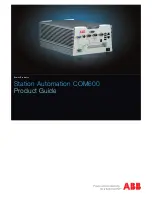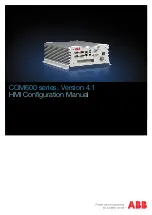
1-5
Cisco AS5850 Universal Gateway Hardware Installation Guide
78-10573-06 0A
Chapter 1 Cisco AS5850 Product Overview
Functional Overview
any DS0 can be mapped to any HDLC controller or universal port. You can install multiple ingress
interface cards of like types and configure the Cisco AS5850 for card or port level redundancy,
depending on your needs.
Trunk and port handling cards are tied together using several time-division multiplexing (TDM) buses
on the backplane. Each line card is also connected, through point-to-point packet buses, to a central
switch on the Route Switch Controller (RSC) cards. The RSC cards transmit and receive packetized data
across the IP network.
The Cisco AS5850 supports a split backplane configuration by using two RSC cards. In the classic-split
configuration, the system operates as two separate universal gateways with each RSC controlling its own
set of feature cards. In the handover-split mode, if one RSC fails, the other RSC takes control of the
failed RSC’s feature cards so their operation can continue. In the route processor redundancy (RPR+)
mode, one RSC acts as the active RSC that controls all the resources in the chassis. The other RSC is the
standby RSC and assumes control of the chassis if the active RSC fails. RPR+ enables a much faster
switchover than handover-split mode. For more information about the split backplane configuration,
refer to the
“Split Backplane” section on page 1-11
.
The RSC card also provides clock and power control to the feature cards. Each RSC card contains a block
of logic, referred to as the common logic, and system clocks. This block generates the backplane 4-MHz
and 8-KHz clocks used for interface timing and for the TDM bus data movement. The common logic can
use a variety of sources to generate the system timing, including a BITS input signal from the BNC
connector on the RSC front panel. The clock source can also be telco office timing units extracted from
the network ingress interfaces.
On the RSC card, only one common logic is active at any one time, which is identified by the CLK
(clock) LED on the RSC card front panel. The active common logic is user-selectable and is independent
from each RSC. This assures that if an RSC card needs replacing or if the slave RSC card becomes the
master, clocking remains stable. The selected common logic should not be changed during normal
operation unless related hardware failure is suspected or diagnosed.
You can install and upgrade software remotely, without affecting current system operation. You can also
upload and download configuration files remotely, without affecting current system operation. Remote
access is enabled by use of simple network management protocol (SNMP), by a Telnet session to a
console port on the router shelf, through the World Wide Web (WWW) interface, or through use of the
optional network management software.
The Cisco AS5850 can dynamically adjust any port to support any user configuration. Individual users
can be authenticated as they connect to the system by use of one or more authentication servers using
RADIUS and authentication protocols. Primary and backup authentication servers can define
user authentication parameters using the user domain and the number called. User profile information
can also be configured to include time of day, number of simultaneous sessions, and number of
B-channels used.
When a remote user connects to the universal gateway using a modem or an ISDN line, the user is
authenticated and establishes a session. Dynamic address assignment from an authentication server or
static address assignment connects the user and has virtually no impact on service provider routing
tables.
A remote LAN user can connect to the universal gateway using an ISDN line or asynchronous serial
connection, be authenticated, and establish a session. In addition to dynamic or static address
assignment, this connection requires the traditional Cisco IOS software support for different routing
protocols on different ports simultaneously, with virtually no impact on service provider routing tables.






































